-
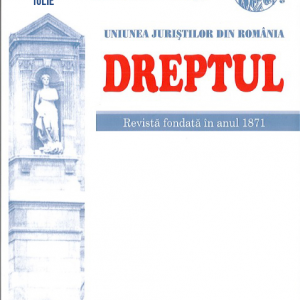 The author summarizes the contractual solidarity principle and its overall consequences. At the core of contractual solidarity lies the requirement of reconciling the contractual interests of the parties. Compliance with this requirement stems from the relationship of solidarity between the parties in the context of contract performance and is intended to govern the being and its execution, including the consequences of breaching this tie, should either party be in default. Contract performance supposes the existence and action of solidarity relationship between the Contracting Parties, each laying under the obligation to accomplish the contractual interests of the other Party. Effective and beneficial accomplishment of said objective is ensured by complying the cooperation and coherence duties, which originate and argument their existence in strict relationship of contractual solidarity. The requirement to reconcile the interests of the parties is valid also if difficulties arise for either party during the contract performance. To overcome these difficulties, the parties are required to comply with two duties: the duty of tolerance and the duty of contract adjustment. Finally, the author reveals that the requirement above is meant to govern also consequences arisen from the breach of solidarity ties, in terms of contract unlawful non-performance. Thus, in selecting and implementing remedies and powers it may appeal to, the creditor is bound to comply with the internal consistency of the contract and the duty of fair proportionality or measures; the aim of these duties is the taking-up by the creditor of behaviors consistent with the purpose of the privilege chosen, without contradictions and disproportions in terms of the seriousness of unlawful contract nonperformance by the debtor.The author concludes that the constituent elements of contractual solidarity, on account of their action and effects, are likely to ensure proper performance of duties, to save contracts existence and, ultimately, to accomplish the interests of contracting parties, the purpose of any contractual tie.
The author summarizes the contractual solidarity principle and its overall consequences. At the core of contractual solidarity lies the requirement of reconciling the contractual interests of the parties. Compliance with this requirement stems from the relationship of solidarity between the parties in the context of contract performance and is intended to govern the being and its execution, including the consequences of breaching this tie, should either party be in default. Contract performance supposes the existence and action of solidarity relationship between the Contracting Parties, each laying under the obligation to accomplish the contractual interests of the other Party. Effective and beneficial accomplishment of said objective is ensured by complying the cooperation and coherence duties, which originate and argument their existence in strict relationship of contractual solidarity. The requirement to reconcile the interests of the parties is valid also if difficulties arise for either party during the contract performance. To overcome these difficulties, the parties are required to comply with two duties: the duty of tolerance and the duty of contract adjustment. Finally, the author reveals that the requirement above is meant to govern also consequences arisen from the breach of solidarity ties, in terms of contract unlawful non-performance. Thus, in selecting and implementing remedies and powers it may appeal to, the creditor is bound to comply with the internal consistency of the contract and the duty of fair proportionality or measures; the aim of these duties is the taking-up by the creditor of behaviors consistent with the purpose of the privilege chosen, without contradictions and disproportions in terms of the seriousness of unlawful contract nonperformance by the debtor.The author concludes that the constituent elements of contractual solidarity, on account of their action and effects, are likely to ensure proper performance of duties, to save contracts existence and, ultimately, to accomplish the interests of contracting parties, the purpose of any contractual tie. -
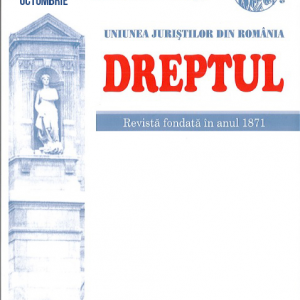 The author examines the offense of child maltreatment in relation to the offense history and in terms of the new Criminal Code. Also, de lege ferenda, the author suggests that the offense analyzed should be provided for in the chapter on offenses against the family of the new Criminal Code; this solution was also adopted by the Criminal Code in force.
The author examines the offense of child maltreatment in relation to the offense history and in terms of the new Criminal Code. Also, de lege ferenda, the author suggests that the offense analyzed should be provided for in the chapter on offenses against the family of the new Criminal Code; this solution was also adopted by the Criminal Code in force. -
 The author provides detailed analysis of the legal content of the offense of abuse of office as stipulated for in Art. 297 of the new Criminal Code. He examines the object of criminal protection, the subjects of offense, the objective and subjective sides, the forms, methods, sanctions and certain procedural aspects relating to the offense provided for in Art. 297 of the new Criminal Code. Also, the author does not hesitate to express his views regarding the constituent content of this criminal offense, its systematization, and its nature and to advance certain solutions and ideas of his own in this regard. Last but not least, certain personal views about the concept of subsidiarity, and the law applicable in the event of transitional situations are also promoted.
The author provides detailed analysis of the legal content of the offense of abuse of office as stipulated for in Art. 297 of the new Criminal Code. He examines the object of criminal protection, the subjects of offense, the objective and subjective sides, the forms, methods, sanctions and certain procedural aspects relating to the offense provided for in Art. 297 of the new Criminal Code. Also, the author does not hesitate to express his views regarding the constituent content of this criminal offense, its systematization, and its nature and to advance certain solutions and ideas of his own in this regard. Last but not least, certain personal views about the concept of subsidiarity, and the law applicable in the event of transitional situations are also promoted. -
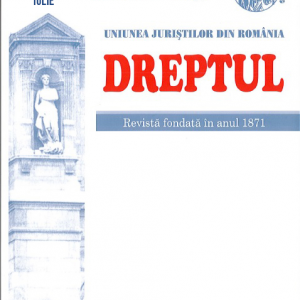 This study begins with on overview of the regulations covering unjust enrichment in French law and the Romanian civil law under the former Civil Code, retaining the fact that its existence as an autonomous source of obligations was, however, recognized and established the Praetorian way. The central part of the study deals with the analysis of the legal regime of unjust enrichment, arising from the express provisions and general rules accounting for relevant general rules under the new Civil Code (Articles 1345-1348); thus, there are set out and debated the conditions of existence of this source of obligations and the admissibility of the action de in rem verso. The author’s approach continues with addressing the unjust enrichment effects and the specific rules applicable to restitutions on this basis. Eventually, it is argued that this autonomous source of obligations is theoretically and philosophically based upon the idea or the principle of fairness.
This study begins with on overview of the regulations covering unjust enrichment in French law and the Romanian civil law under the former Civil Code, retaining the fact that its existence as an autonomous source of obligations was, however, recognized and established the Praetorian way. The central part of the study deals with the analysis of the legal regime of unjust enrichment, arising from the express provisions and general rules accounting for relevant general rules under the new Civil Code (Articles 1345-1348); thus, there are set out and debated the conditions of existence of this source of obligations and the admissibility of the action de in rem verso. The author’s approach continues with addressing the unjust enrichment effects and the specific rules applicable to restitutions on this basis. Eventually, it is argued that this autonomous source of obligations is theoretically and philosophically based upon the idea or the principle of fairness. -
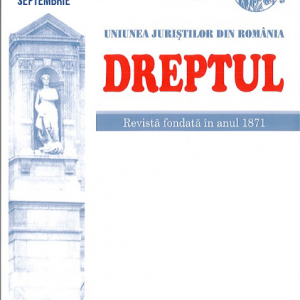 In this study there are analyzed the issues raised by the conclusion and performance of the electronic contracts, also having in view that the cyberspace where they are located has no borders. There are examined, by turns, the regulation of the electronic contract (1); the notion of electronic contract, the notion of electronic means, the classification of electronic contracts (2); the formation of the electronic contract (3); the proof of electronic contract (4); the delocalisation of the electronic contract and its significance for the international trade law (5).
In this study there are analyzed the issues raised by the conclusion and performance of the electronic contracts, also having in view that the cyberspace where they are located has no borders. There are examined, by turns, the regulation of the electronic contract (1); the notion of electronic contract, the notion of electronic means, the classification of electronic contracts (2); the formation of the electronic contract (3); the proof of electronic contract (4); the delocalisation of the electronic contract and its significance for the international trade law (5). -
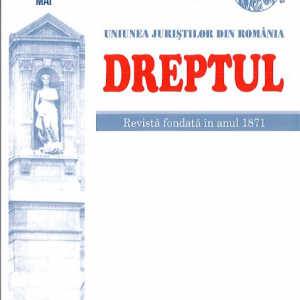 The article deals with the problems of suspension of judgment by the Romanian court based on Article 413 (1) point 1 of the Civil Procedure Code, on the grounds of the existence of a judgment pending before a foreign court.
The article deals with the problems of suspension of judgment by the Romanian court based on Article 413 (1) point 1 of the Civil Procedure Code, on the grounds of the existence of a judgment pending before a foreign court. -
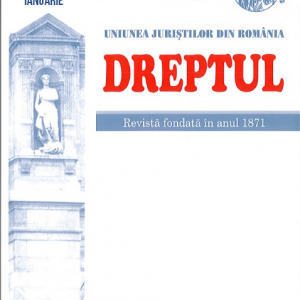 In this study, the author explains the concepts of: structure of the registered capital; general pledge of the creditors; registered capital; difference between the registered capital and the patrimony of the company; difference between the registered capital and the equity capital (net assets); difference between the registered capital and the value of the company, as well as the problems of the legal regime of social contributions after payments, as all of the above follow from the Law No 31/1990 (republished) on companies.
In this study, the author explains the concepts of: structure of the registered capital; general pledge of the creditors; registered capital; difference between the registered capital and the patrimony of the company; difference between the registered capital and the equity capital (net assets); difference between the registered capital and the value of the company, as well as the problems of the legal regime of social contributions after payments, as all of the above follow from the Law No 31/1990 (republished) on companies. -
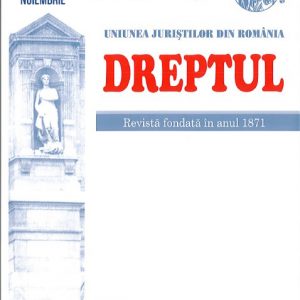 Engaging the civil tort liability has as finality the full reparation of the damage. Reparation is a legal means by which the victim may claim to be reinstated in the situation prior to the commission of the illegal act. The right to reparation depends on an objective fact, that of causing the damage. The condition of the certainty of the damage is its most important character. If the damage is not certain, it can not be ascertained whether the right to reparation arose, and if the uncertainty concerns the extent thereof, the object of the claim for damages can not be established. Sometimes, in practice, it is difficult to determine whether the damage invoked is certain or possible. In relation to this condition of certainty of the damage, the damage by loss of the opportunity to gain an advantage is one of the innovative elements of the new regulation, being outlined as a distinct category of reparable damage.
Engaging the civil tort liability has as finality the full reparation of the damage. Reparation is a legal means by which the victim may claim to be reinstated in the situation prior to the commission of the illegal act. The right to reparation depends on an objective fact, that of causing the damage. The condition of the certainty of the damage is its most important character. If the damage is not certain, it can not be ascertained whether the right to reparation arose, and if the uncertainty concerns the extent thereof, the object of the claim for damages can not be established. Sometimes, in practice, it is difficult to determine whether the damage invoked is certain or possible. In relation to this condition of certainty of the damage, the damage by loss of the opportunity to gain an advantage is one of the innovative elements of the new regulation, being outlined as a distinct category of reparable damage. -
 This study appeared as a result of a case solved in practice and identifies legal issues also common to many other cases, which, as always, is subject to the analysis and to the specialised criticism, the latter being accompanied by any other possible points of view.
This study appeared as a result of a case solved in practice and identifies legal issues also common to many other cases, which, as always, is subject to the analysis and to the specialised criticism, the latter being accompanied by any other possible points of view. -
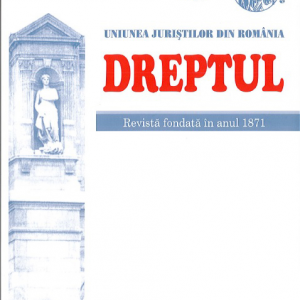 Throughout more than 150 years of constitutional history in Romania, the Romanian constitutions have provided the modality of engaging the liability of the ministers for their activity. This article aims to make a brief analysis of how it was regulated the liability of ministers in the various constitutions which Romania has adopted over time and of the relation between the political and legal liability of ministers in the Romanian law, starting from the practical realities of recent years. Although, traditionally, in the constitutional law it is made a clear distinction between the political and legal liability, in practice, the boundary between the two types of liability is questionable, especially from the perspective of the legal classification of these types of liability. If the political liability is considered to be that liability of ministers before the Parliament for their political activity which may result in the loss of confidence and the removal from the office of minister, the legal liability has in view how a minister should bear the consequences of the law, by his prosecution and indictment.
Throughout more than 150 years of constitutional history in Romania, the Romanian constitutions have provided the modality of engaging the liability of the ministers for their activity. This article aims to make a brief analysis of how it was regulated the liability of ministers in the various constitutions which Romania has adopted over time and of the relation between the political and legal liability of ministers in the Romanian law, starting from the practical realities of recent years. Although, traditionally, in the constitutional law it is made a clear distinction between the political and legal liability, in practice, the boundary between the two types of liability is questionable, especially from the perspective of the legal classification of these types of liability. If the political liability is considered to be that liability of ministers before the Parliament for their political activity which may result in the loss of confidence and the removal from the office of minister, the legal liability has in view how a minister should bear the consequences of the law, by his prosecution and indictment. -
 An employment contract is decisively characterized by the relationship of subordination between the parties, which distinguishes it from a civil contract. The reclassification of a civil contract as having the legal nature of an employment contract can be done by the labour law court, by the fiscal control body and, more recently, even by the labour inspector. The paper analyzes the criteria under which such reclassification can intervene, what are its traps and its effects. It is finalized with a series of proposals aimed at simplifying the reclassification operation, as well as providing legal certainty.
An employment contract is decisively characterized by the relationship of subordination between the parties, which distinguishes it from a civil contract. The reclassification of a civil contract as having the legal nature of an employment contract can be done by the labour law court, by the fiscal control body and, more recently, even by the labour inspector. The paper analyzes the criteria under which such reclassification can intervene, what are its traps and its effects. It is finalized with a series of proposals aimed at simplifying the reclassification operation, as well as providing legal certainty. -
 This article presents the procedural features of the principle non reformatio in pejus in civil procedural area. It aims to concentrate the main theoretical and practical concepts exposed during the time, relating to the limits of this principle. Finally, the study is dedicated to analyze the real interference between different peremptory rules, which govern the appeal, and the principle analyzed.
This article presents the procedural features of the principle non reformatio in pejus in civil procedural area. It aims to concentrate the main theoretical and practical concepts exposed during the time, relating to the limits of this principle. Finally, the study is dedicated to analyze the real interference between different peremptory rules, which govern the appeal, and the principle analyzed.
